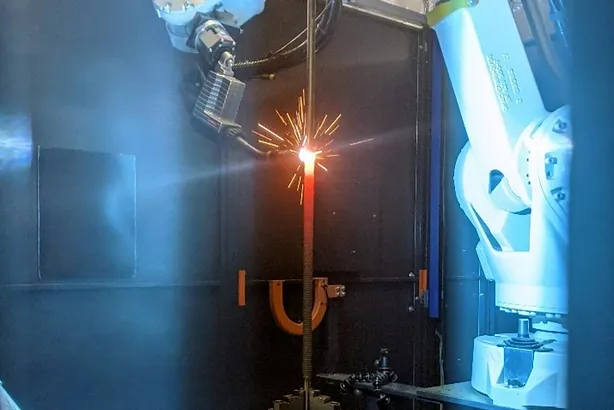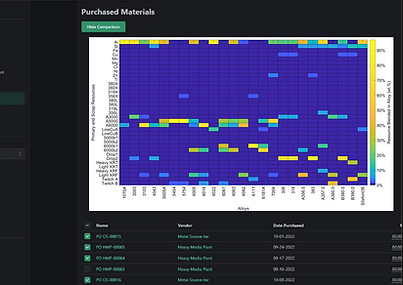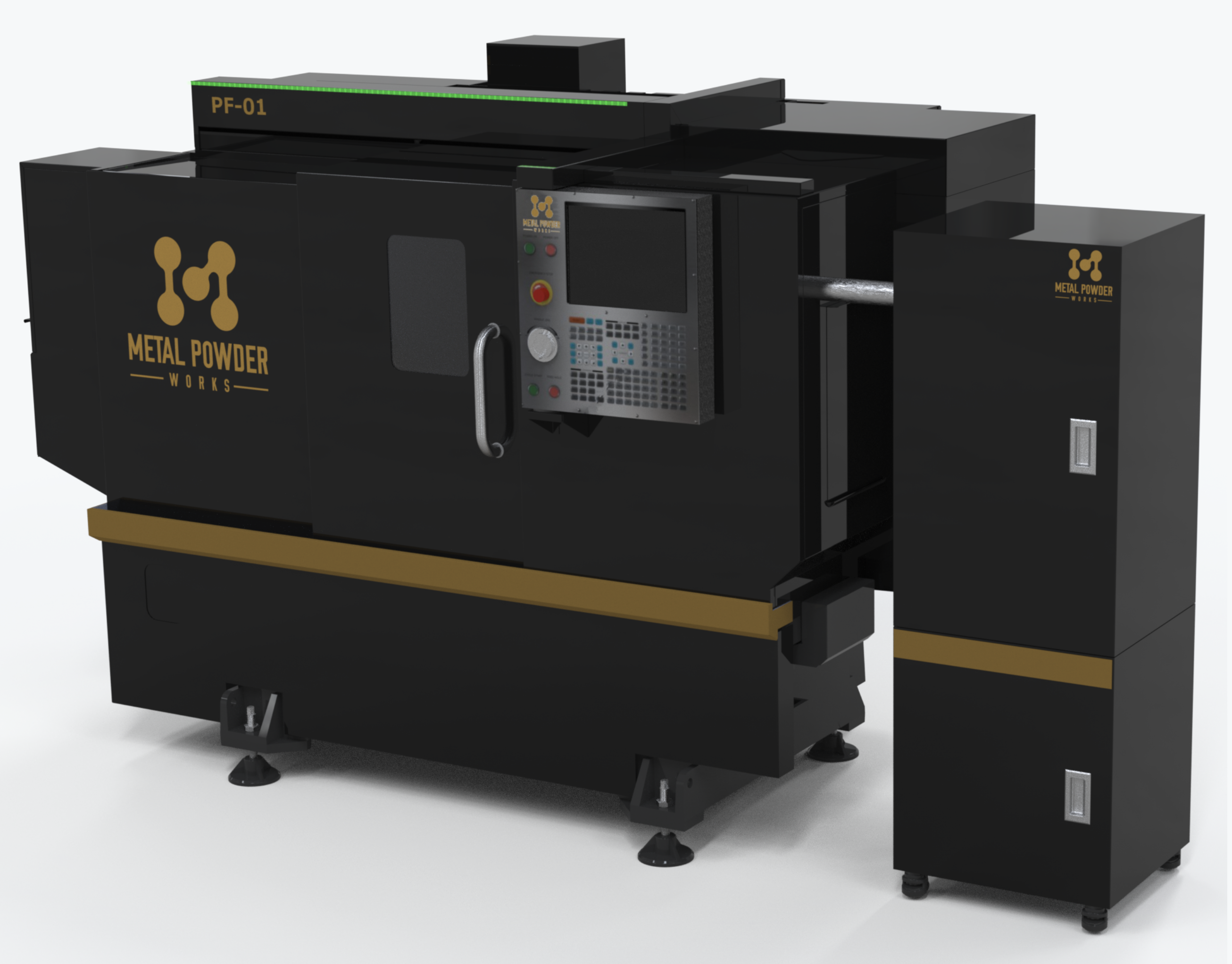According to the “Metal AM Markets: 2023” report from Additive Manufacturing Research, metal powders for 3D printing are set to reach nearly $1 billion in revenues by 2023. While laser powder bed fusion (LPBF) technology is thought to capture the lion’s share of this segment, it is also already the most saturated area of metal additive manufacturing (AM). Therefore, other AM technologies such as cold spray offer the most room for growth.
One of the few brands that recognizes this is Powders on Demand (POD), a division of Solvus Global. The Massachusetts-based business has carved a niche for itself in the industry, focusing on highly specialized applications, particularly in the realm of cold spray technology. The journey of Powders on Demand reflects a broader vision of Solvus Global, which aims to create significant value in technology sectors that positively impact industries, and, the world. To learn more, we spoke to POD Co-founder & CEO Bradley Richards.
A Diverse, Integrated Company
Founded in 2017, Solvus Global is a materials, manufacturing, and technology solutions company that operates several specialized divisions, each addressing unique challenges in their respective fields. Among them is Mammoth Metalworks, which focuses on large-scale metal AM, combining advanced techniques to produce parts exceeding practical size limitations of LPBF and Binder Jet. A main goal is to replace traditional casting and forging, but subsequently produce large, designed for additive manufacturing (DFAM) parts. Closely related is POD, which offers an online platform for quality-controlled powder products backed by technical experts in coatings and AM processes. POD caters to both AM and coatings industries with a focus on microstructural engineering and high end powders such as refractory metals and composites.
Augmenting the Solvus Global brand are an array of unique divisions dedicated to specialty operations. VALIS enhances metal scrap recycling profitability through process optimization software, integrating sensor-based technology for real-time quality monitoring and upcycling post-consumer material. APEX offers manufacturing intelligence for Industry 4.0, aggregating data from various sensors and controllers for predictive process control using machine learning. Finally, there’s Kinetic Batteries, which is geared toward manufacturing environmentally friendly, energy-dense, 3D printable solid-state lithium-ion batteries, developing custom powders for various battery sizes.
“Solvus exists as an enterprise that generates business units with specific focuses on areas of technology that we broadly feel are relevant to making a difference—an area where we can concretely contribute to either a market, an industry or, or hopefully the world as a whole,” said Richards, who went from starting his career at GE Global Research as a research scientist hyper-focused on developing materials and later becoming Director of Business & Technology at AMETEK Eighty Four before co-founding POD.
The origins of POD are anchored in an understanding of material properties and their applications in various technologies. Initially, the division concentrated on developing microstructurally engineered aluminum powders for repair and coatings. This focus was not just on creating materials but also validating and demonstrating their effectiveness in specific applications.
This approach is particularly evident in their work with cold spray technology. Unlike many powder producers who target mainstream production markets, POD has tailored its efforts to meet the needs of a niche but developing market where the technology is distinct, and the requirements are highly specialized.
“POD was really born out of a need for making very consistent cold spray materials for highly specialized applications. When the company was founded, and even today, the market is fairly small and developing,” Richards said. “The needs of a small and developing market are unique, especially when the technology’s requirements are very different from the mainstream production market which is what most powder producers target. As subject matter experts in cold spray and powders, we focus very specifically on certain elements of powder modification and creation of materials to achieve specific end properties, which are absolutely critical to our customers.”
Crucial to POD’s business model is the fact that Solvus Global’s brands actually run the technologies on which POD powders are used. This ensures that POD’s products are developed and validated for their end user with those needs in mind from the start.
Avoiding LPBF
A significant aspect of Powders on Demand’s strategy is its deliberate focus on highly technical markets and resulting focus away from saturated markets such as LPBF.
“We broadly stay away from LPBF, which is a very saturated space. There are a lot of people who do that well, and frankly, our technical capabilities have more impact elsewhere. Even though we are fantastic engineers, our opportunity to be highly innovative and create exceptional value is far better outside of LPBF. The market is one of commodities and a race to deploy massive capital in a contended space—what companies have sunk tens or hundreds of millions into making a better printer or a larger powder production machine just to be one-upped?” Richards said.
This decision underscores the company’s ability to identify and fill specific market gaps that align with its expertise. Instead of competing in crowded spaces, the organization has chosen to focus on large-scale parts and specialized repair technologies through cold spray. This focus reflects a clear understanding of market dynamics and the company’s strengths in delivering unique, highly technical solutions.

“Our focus has been on specialized repair markets and a very specific sub-sector of AM where we’re interested in large parts—substantially larger than we expect powder bed systems to economically achieve in the next five years or so. If they do go bigger, which they might or might not, their production rates are still far too low to be cost competitive with any of the technologies we work with.”
Solvus offers an array of large-format 3D printing capabilities, ranging from cold spray and coating processes more generally to wire arc AM (WAAM) including a GEFERTEC and other machines, a WarpSPEE3D machine with Phaser nozzle, and even friction stir additive from Bond Technologies. Additional capabilities are inbound starting in early 2024 to keep POD and Mammoth fast and tackling the biggest supply chain challenges faced by the DoD and industry alike.
“We’re looking at big parts in the thousand-pound-plus and in the many-feet-in-diameter range,” Richards said. “We’re specifically attacking markets where there’s small production run, casting, or one-off needs. That market is inherently more specialized and fundamentally has a very different set of needs from a development standpoint than something that’s going to be commoditized bulk production of parts in a powder bed. Similar strategies are reflected in our repair portfolio for critical components.”
Industrial Symbiosis
The philosophy driving Powders on Demand and Solvus Global is rooted in the desire to pursue projects that have a tangible, positive impact on the world, beyond mere profitability. This ethos is evident in the diverse applications of their technologies, from meeting small-scale production needs to potentially contributing to global challenges.
“At the core of it, Solvus’s goal is to do things of value for the world. That’s quite different from most public companies or PE-backed entities. We’re not aiming to generate monstrous profits next month. We’re investing in the manufacturing and technology solutions of tomorrow. It’s not to say that we don’t run a very responsible business, but that one of our primary goals is to invest in the future. We want to do things that matter and where we can make a difference even as a small business. All of the Solvus business divisions are contributing to moving that needle and giving ourselves the resources to be more impactful as we go forward.”
One of the most obvious and immediate ways that the entire enterprise can potentially improve the state of the world is through sustainability, which, at Solvus, seems to be embodied in its industrial symbiosis. The various business units are extremely synergistic while also tackling issues at large technologically.

VALI-Melt is a software tool that considers critical factors related to the quality, profitability and sustainability of scrap products. Image courtesy of VALIS.
For instance, VALIS specializes in process optimization software for the recycling industry. Its technology, VALI-Sort, integrates with sorting equipment to capture essential material data, facilitating real-time quality monitoring and process optimization. This enables scrap processors to adapt quickly to changes in material consumption, enhancing competitiveness in the material supply chain.
Additionally, VALIS is developing VALI-Melt, an advanced sensing and software tool for upcycling post-consumer, non-ferrous scrap. This tool will provide rapid feedstock analysis, optimized blending capabilities, and real-time melt analysis, enhancing safety and efficiency in recycling operations. VALIS’s solutions are aimed at increasing the value, ease, and sustainability of recycling processes, moving towards complete automation in scrap sorting.
The ability to maximize use of scrap metal, key in a world where natural resources are depleting at a rapid rate, is obviously a natural fit alongside units like POD and even Kinetic Batteries, as lithium batteries begin to require recycling for future generations of electric devices and vehicles.
“Scrap businesses have a tough existence. It’s almost 2024, why do scrap businesses not look like the robotic factories of Tesla and Toyota? We have the technology and the tools today to undertake massive deployments and integrate machine learning and AI into many industries. I think we’re finally entering a point on the tech curve where we’re actually capable of implementing those technologies into the scrap business.”
Localized production is another area where Powders on Demand is pioneering. In an era where supply chain complexities are increasingly evident, producing materials closer to their point of use offers logistical and environmental advantages. This model aligns with the company’s vision of sustainable and efficient operations.
“Does it really make sense to generate powders in Massachusetts if you’re going to use them halfway across the world? Perhaps, but there really are elements of managing a supply chain that are extremely difficult and it doesn’t matter what market you’re in. If we can help address that in some context through localized production, then why not? And, if we can do that efficiently with a smaller piece of equipment or field deployable pieces of equipment as opposed to the massive capital installations that are required for very large atomization facilities, there’s probably something to that. And it’s absolutely a model we’re interested in looking at.”

MPW’s DirectPowder system. Image courtesy of MPW.
For that reason, POD recently acquired the first DirectPowder unit from Metal Powder Works (MPW) outside of MPW’s own facility at Neighborhood 91 in Pittsburgh, Pennsylvania. The technology is meant to produce metal powders more efficiently without melting and in a smaller footprint than other powder production techniques.
“MPW has a pretty neat and unique technology. The fundamentals of powder manufacturing really haven’t changed in 50 years. It’s great to see someone come up with a novel method to produce powder. We see applications and possibilities to test out unique materials and generate unique forms of materials that could be useful to the end customer,” Richards said.
Solvus Global is still a young company, but as it grows, it will further connect the threads of industrial symbiosis within its own business and then expand to introduce that model elsewhere. As it does so, it will be able to continue to prove its capability as an interface of change as it strives to solve global challenges.
Subscribe to Our Email Newsletter
Stay up-to-date on all the latest news from the 3D printing industry and receive information and offers from third party vendors.
You May Also Like
Further Understanding of 3D Printing Design at ADDITIV Design World
ADDITIV is back once again! This time, the virtual platform for additive manufacturing will be holding the first-ever edition of ADDITIV Design World on May 23rd from 9:00 AM –...
3D Printer Maker EVO-tech Reborn as NEVO3D — Once More With Feeling
EVO-tech was a 3D printing service and original equipment manufacturer established in 2013 and based in Schörfling am Attersee, Austria. The company produced high-quality material extrusion systems featuring linear bearings,...
3D Systems Brings 3D Printed PEEK Cranial Implant to the U.S. with FDA Clearance
For more than 10 years, 3D Systems (NYSE:DDD) has worked hand-in-hand with surgeons to plan over 150,000 patient-specific cases, and develop more than two million instruments and implants from its...
CDFAM Returns to Berlin for Second Annual Symposium
The second CDFAM Computational Design Symposium is scheduled for May 7-8, 2024, in Berlin, and will convene leading experts in computational design across all scales. Building upon the first event...































